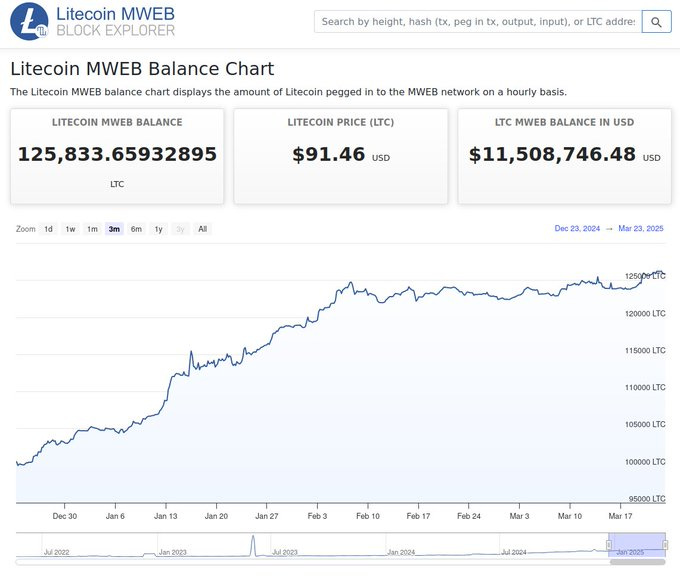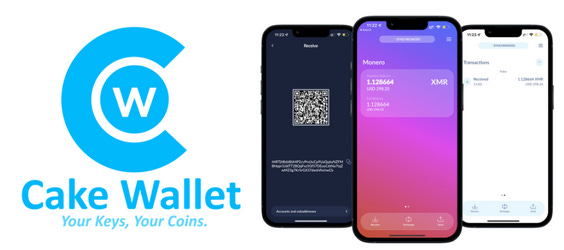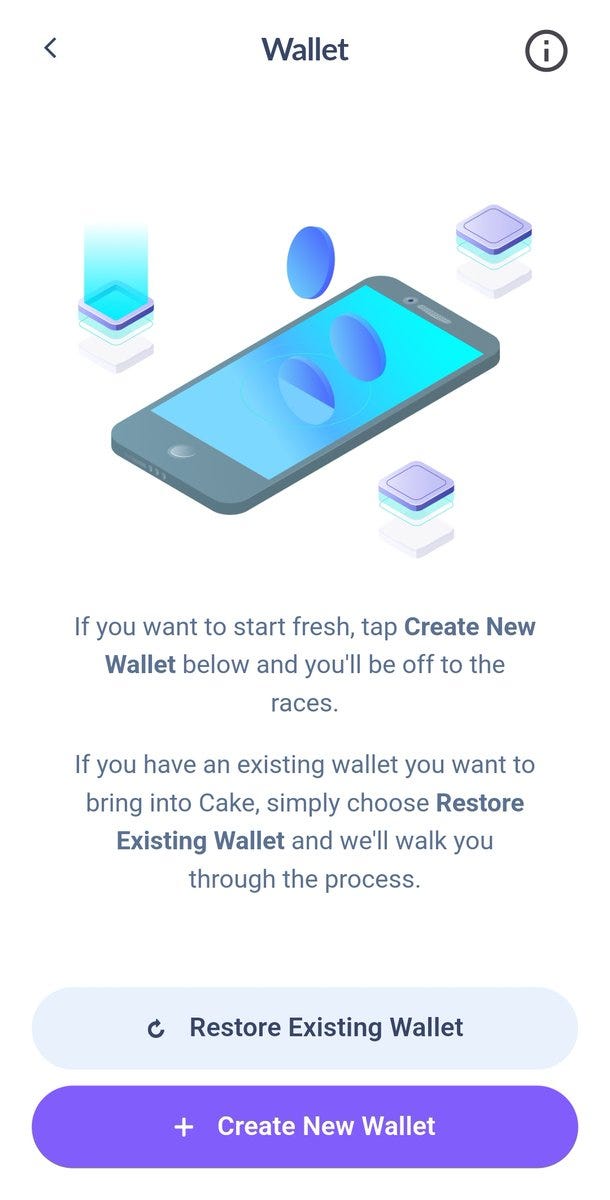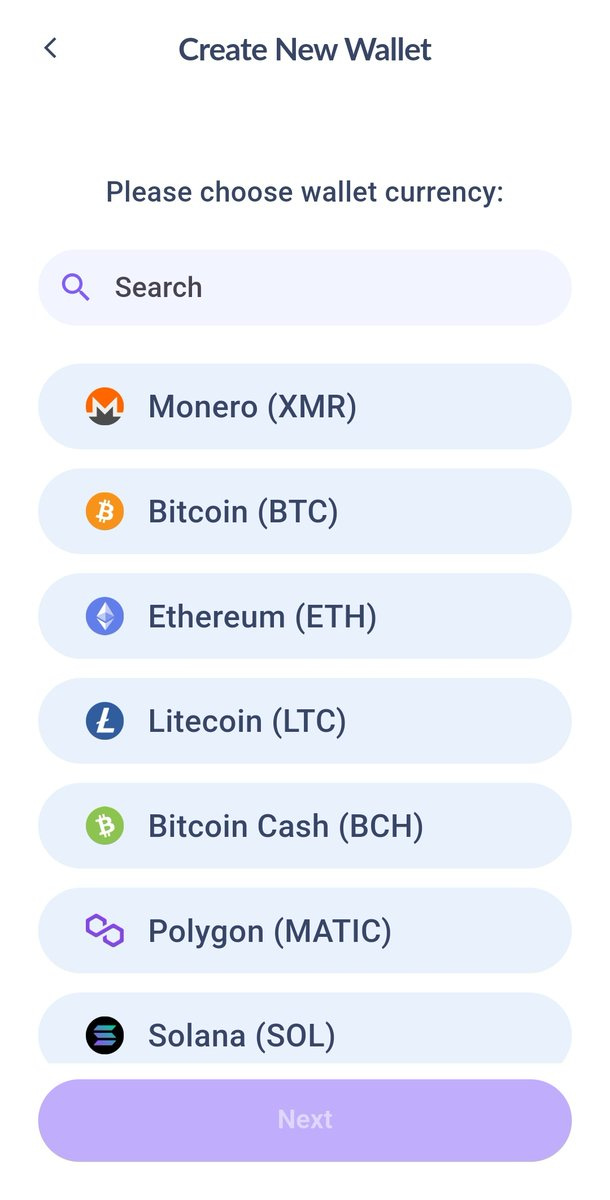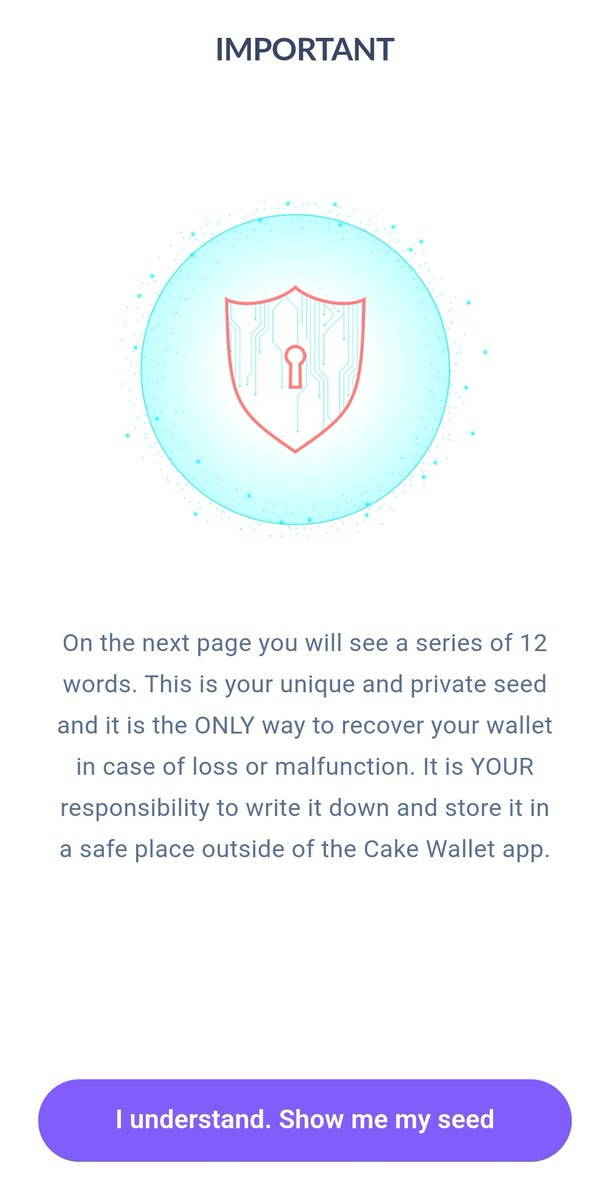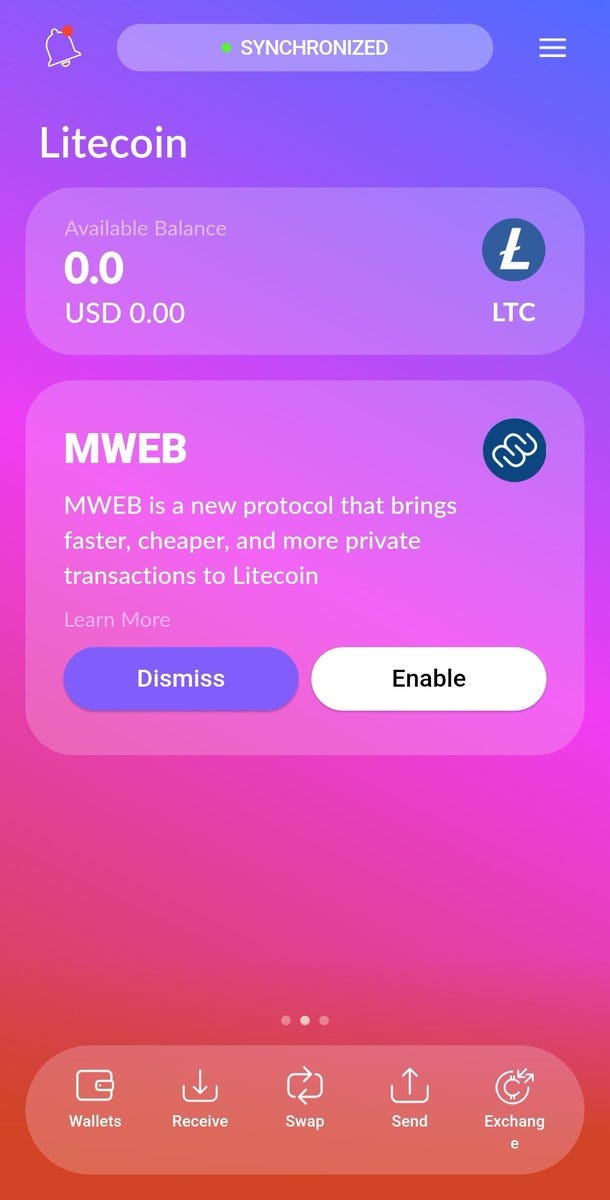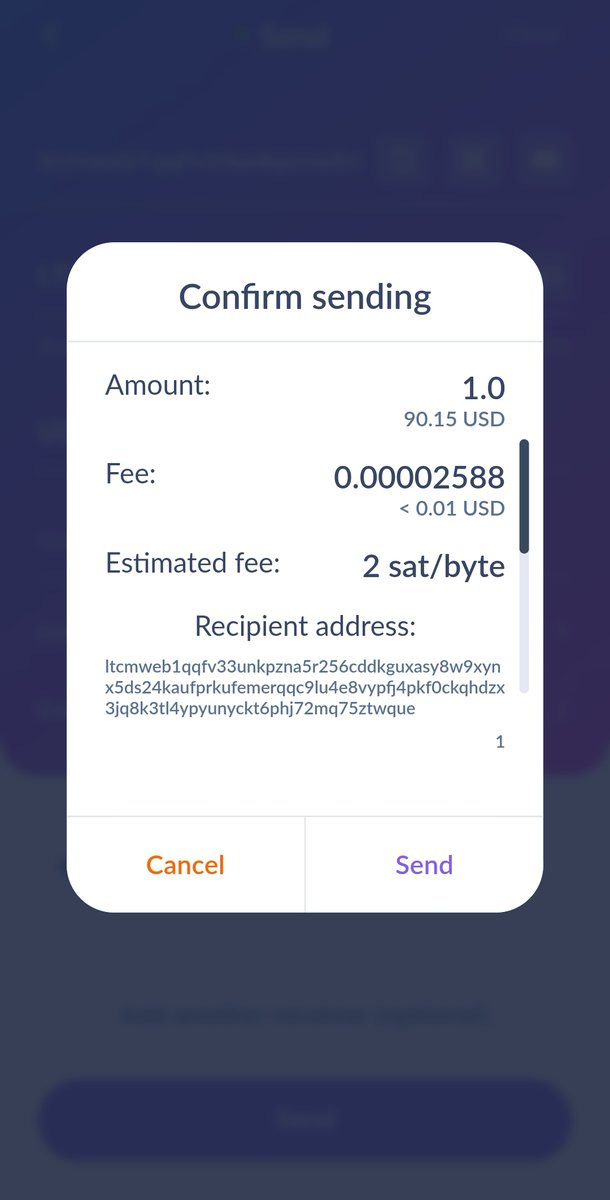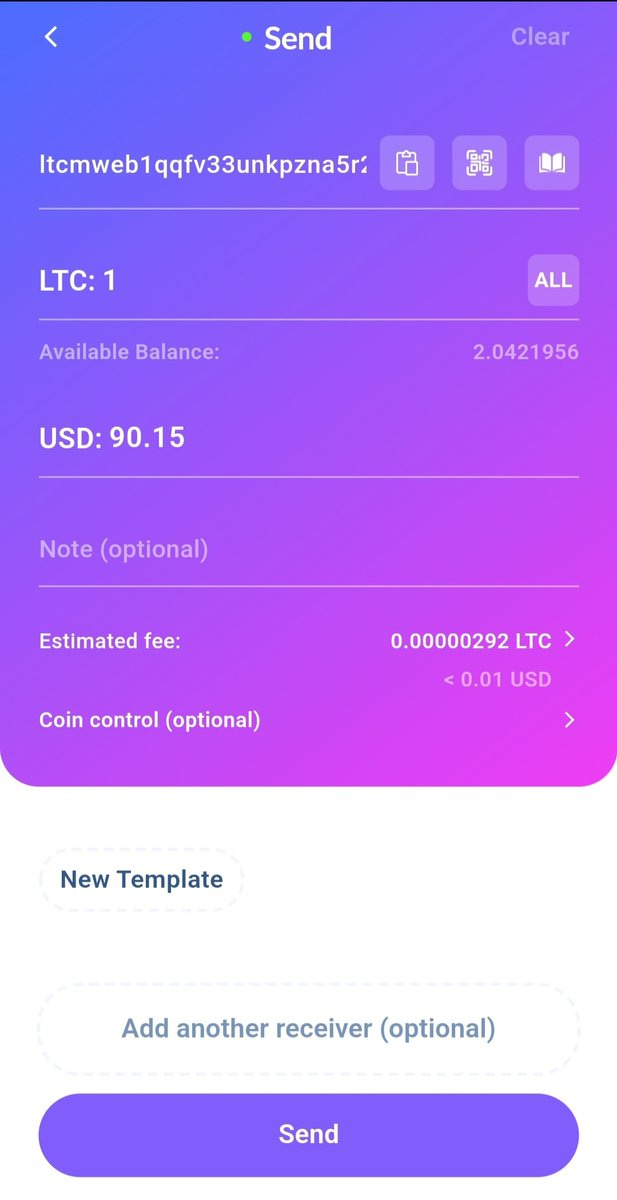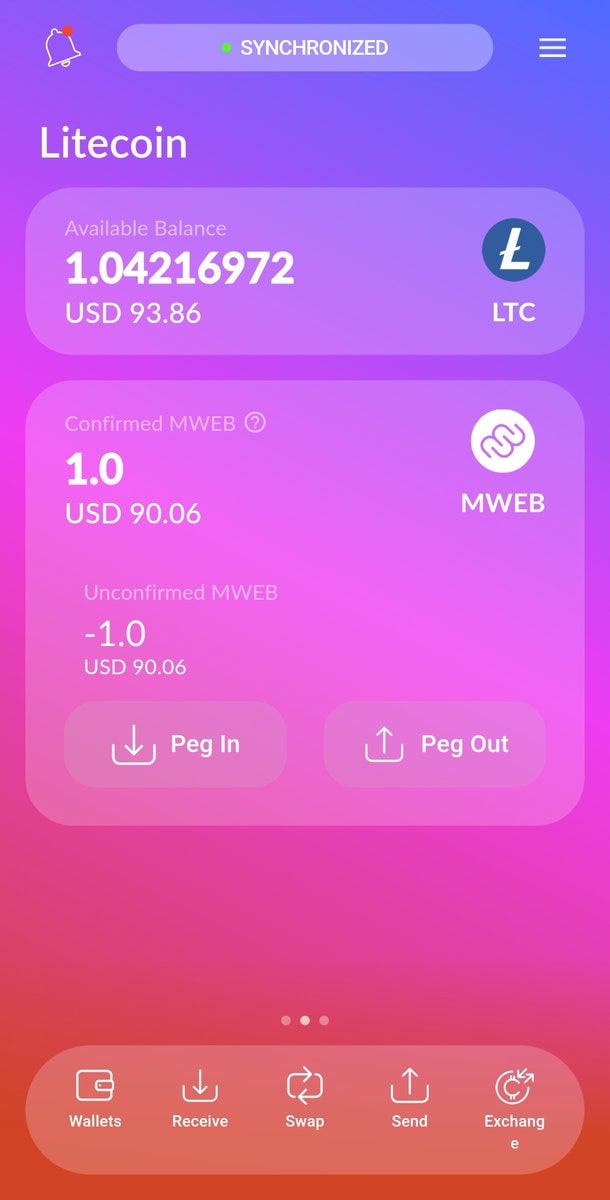How To: Use Litecoin MWEB via CakeWallet
As a contributor for the Litecoin Foundation I am primarily focused on educating and spreading the word about Litecoin’s optional privacy-feature, MWEB, and how it can be used.
In this guide I will walk you through how to use CakeWallet, a non-custodial, open-source cryptocurrency wallet that supports multiple coins, including Litecoin, and the fact that it is among the few wallets that have so far implemented MWEB.
What is MWEB?
‘MWEB’ stands for MimbleWimble Extension Blocks and is the name of Litecoin’s upgrade that aims to enhance privacy and scalability. MimbleWimble was proposed by Tom Elvis Jedusor in 2016. The integration into Litecoin began in 2019 on the initiative of Litecoin lead developer David Burkett, who was supported by donations from the community, as well as by Charlie Lee himself and launched in May 2022.
Litecoin MWEB Balance Chart;
https://www.mwebexplorer.com/charts/mwebbalance
MWEB operates as an optional parallel layer to Litecoin’s main blockchain. Facilitating stealth addresses (single-use addresses that hide the recipient’s identity) and confidential transactions, which conceal transaction amounts using cryptographic proofs. This way, all addresses and amounts are only visible to sender and receiver, no one else, contrary to the Bitcoin blockchain.
Through pruning old transaction data it also enhances scalability, via MWEB there could be 10x more transactions per second than on the Litecoin main chain alone.
What is CakeWallet?
Cake Wallet is a non-custodial, open-source cryptocurrency wallet that supports multiple coins, including Litecoin (LTC). It stands out for its early adoption of Litecoin’s MWEB feature, which enhances privacy by hiding transaction amounts and utilizing stealth addresses. This guide will walk you through installing Cake Wallet, setting up an LTC wallet, and using MWEB for private transactions—all while keeping your funds secure.
How to Use Cake Wallet for Litecoin (LTC) MWEB
What You’ll Need
Really not much! A smartphone (iOS or Android) or a desktop computer (Linux, Windows, macOS), an internet connection, a pen and paper (or a steel backup tool for more security) and you are already good to go!
Step 1: Download and Install Cake Wallet
Mobile: Visit the App Store (iOS) or Google Play Store (Android) and search for 'Cake Wallet.' Alternatively, download it directly from cakewallet.com
Desktop: Visit the official website, download the beta version for your operating system (Windows, macOS, or Linux), and install it.
Only download from official sources to avoid phishing scams or fake apps.
Install the App by following the on-screen instructions to install Cake Wallet on your device. On mobile, it’s a standard app install; on desktop, run the installer and grant the necessary permissions first.
Afterwards you can launch the app. You’ll see a clean interface with options to create a new wallet or restore an existing one:
Step 2: Create a New Litecoin Wallet
On the welcome screen, click ‘New Wallet’ (or equivalent on desktop) and you will be prompted to name your wallet (e.g., 'My LTC Wallet') and select a cryptocurrency, in this case obviously Litecoin (LTC), from the dropdown menu; afterwards click ‘create’ or ‘next’:
Most important is that you secure your seed phrase, a 12-word BIP 39 phrase, that is needed in order to recover your wallet in case your device should ever get lost or damaged. Do never just take a screenshot of it, do never store it digitally:
A better option is to save it on paper, store it safely, or even better, get a steel backup tool (LINK). Afterwards verify the seed phrase in CakeWallet.
For an extra layer of security you will also be able to create a password, optionally also biometric authentication via fingerprint or FaceID, the latter just in the mobile version.
Step 3: Enabling MWEB for Litecoin Privacy
MWEB (MimbleWimble Extension Blocks) is Litecoin’s privacy layer, allowing confidential transactions and stealth addresses and has to be activated in Cake Wallet first in order to use it, go first to ‘Settings’, followed by ‘MWEB Settings’.
Put ‘Set MWEB always scanning’ on ‘ON’, so that your wallet is not just syncing legacy LTC but also MWEB. Enable the ‘data usage’ prompt via clicking ‘Enable’ and wait for MWEB to be fully synced, which can take up to 30 minutes, so just relax and be a bit patient in case you are feeling you are in a hurry.
Afterwards return to the main wallet screen. You’ll now see an MWEB balance card alongside your regular LTC balance. Once fully synced, you’re ready to use MWEB!
Step 4: Receive Litecoin (LTC) with MWEB
You want to receive LTC MWEB on CakeWallet? Then you need to generate a MWEB Address first. Go to your CakeWallet main screen and click ‘Receive’, change the address type from ‘SegWit’ to ‘MWEB’ and soon you will see a new address starting with ‘ltcmweb1’, which is your new MWEB stealth address for privacy-enhanced transactions.
Copy the MWEB address or display the QR code to share with the person who wants to send you funds. Please keep in mind, only wallets supporting MWEB (like Cake Wallet or Litecoin Core) can send to this address directly!
Once the sender transfers LTC to your MWEB address, the funds will be visible in your MWEB balance after blockchain confirmation, typically 2.5 minutes per block.
Step 5: Send Litecoin (LTC) Using MWEB
Once the MWEB address is active, sending LTC MWEB is as easy as it gets. Just click ‘Send’ on the main screen of CakeWallet, enter the recipient’s address that starts with ‘ltcmweb1’, enter the amount, change the transaction fee if you like, double-check the address and click ‘Send’.
Step 6: Peg In and Peg Out with MWEB
In order to move funds between regular LTC and LTC MWEB you have to use the ‘Peg In’ and ‘Peg Out’ features, which can be a bit confusing at first, but don’t worry, at the end of the day it’s not too hard:
Peg In (Move LTC to MWEB):
From the main screen, click the 'Peg In' button (usually under the MWEB balance card).
Enter the amount of LTC you want to move from your regular balance to MWEB.
Confirm the transaction. This sends funds to your own MWEB address, making them private.
Peg Out (Move MWEB to Regular LTC):
Click 'Peg Out'.
Specify the amount to move back to your regular SegWit address.
Confirm the transaction. Funds will return to your transparent LTC balance.
Conclusion
CakeWallet is so far the best option for Litecoin users who want to take advantage of MWEB, which elevates LTC’s privacy and usability. In order to stay safe, never forget to check your seed phrase backup, in whatever form, on a regular basis.
In order to gain even more privacy while using LTC MWEB via CakeWallet you can also enable ‘TOR Routing’ in your setting to further anonymize your connection to the Litecoin network. Also, never forget to check for CakeWallet updates!
Financial privacy is a fundamental human right!
Link List
Litecoin Website: https://www.litecoin.org
CakeWallet Website: https://www.cakewallet.com
Litecoin X: https://www.x.com/litecoin
LTC Foundation X: https://www.x.com/ltcfoundation
MWEB Resource: https://litecoin.com/learning-center/litecoin-and-mweb-what-it-is-and-how-to-use-it
MWEB Explorer: https://www.mwebexplorer.com




